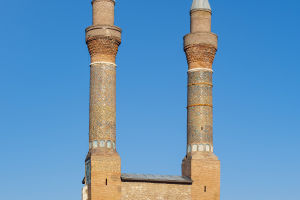There are two popular outdoor activities in recent holidays, one is camping and the other is mountaineering. Campers like to do one thing by themselves, while people who like mountaineering probably like the feeling of being in touch with nature.
Maybe you often like to invite three or five friends to go hiking together. This article will tell you a few things you should consider before climbing. I hope everyone can go up the mountain happily and go down safely.
Before climbing, you need to check that your equipment is complete:
Headlights: In fact, many mountaineering loss incidents happen because you can't find your way back to the tent without wearing a headlight, so headlights are very important.
Trekking poles: Besides saving energy and not consuming too much physical strength, they can also be used as a camp pillar for the outer tent.
Water: In addition to water, it is also recommended to bring a mountaineering water filter, where there is a water source, there will be clean water to drink.
Honey: Because it can directly convert heat, the body can now absorb it and quickly provide body energy.
Mountaineering clothes: sweat-wicking clothes, quick-drying trousers, warm clothes, jackets: 0.6 degrees per 100 meters so that the 1000-meter mountain will be about 6 degrees lower than the flat ground. The higher the altitude, the colder the mountain, so warm clothes must be Be prepared to not overlook the power of nature.
Sun protection equipment (sun headband, sunglasses): The ultraviolet rays in the mountains are more potent than those in the flat ground, so you should prepare well for sun protection equipment, otherwise you will easily get sunburned.
Rainproof equipment: Jackets, Pants: It is recommended to buy two pieces so you will not fall easily when climbing.
Outer tent/sky curtain/black garbage bag: It can be set up at any time if the situation occurs, and it can be used as a temporary shelter from wind and rain to avoid temperature loss. In heavy wind and rain, black garbage bags can also be used as a small space for temporary shelter, and it is less likely to cause loss of temperature due to the wind-chill effect if you put them on yourself.
Personal rope: It is recommended that each person carry at least a string of about 10 meters, a sling of 5 meters, and a 1~2 hook, which can be used as first aid in an emergency.
Map: Be sure to look at the route in advance to understand what terrain the trip may pass through and whether your physical strength can support the itinerary.
It is recommended to do warm-up exercises before climbing. If the mountain you climb is relatively high or you seldom participate in climbing sports, it is necessary to do warm-up exercises before climbing. Use 10-20 minutes to do some muscle stretching exercises, try to relax the muscles of the whole body, so that you will feel a lot easier when climbing.
Do not look around during the mountain climbing process, pay attention to the conditions of the mountains under your feet and the surrounding area. If you need to take pictures of the scenery, you must stop and take photos again, so as to avoid unnecessary damage. If the mountain road is relatively steep, you can climb in a "Z" shape, which is more labor-saving.
Go down the mountain to relax. When going down the mountain, you must control your footsteps, and not rush too fast, which is easy to be injured. At the same time, pay attention to relaxing the muscles in the knee area, too tight will produce more significant pressure on the leg joints and tire the muscles.
The best time to climb the mountain is in the morning or morning, and you should go down the hill and return to the station in the afternoon. Do not arbitrarily change the climbing route and time. The backpack should not be carried by hand but on the shoulders to facilitate grasping and climbing with both hands. You can also use a sturdy long stick as a walking stick to help you climb.


